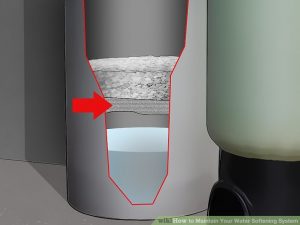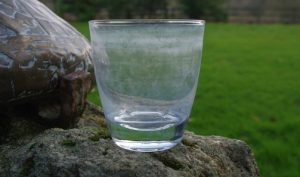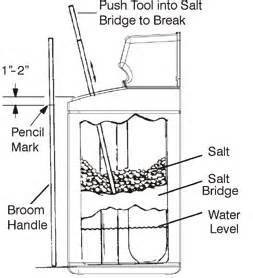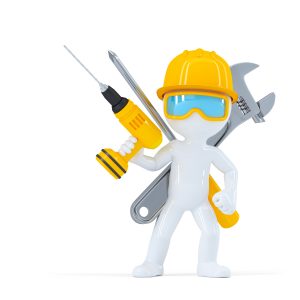Salt Bridge. Sounds like a magical structure in a fairy tale land, doesn’t it? But here in the REAL world it is a big problem for homeowners if left untreated.
What is a salt bridge?
A salt bridge is what happens when a crust-like structure forms in the brine tank of an ion exchange-based water softener system.
First of all, let’s review.
How do I know I have a salt bridge?
If the water softener is malfunctioning, there will be signs indicating this. Some thing to look out for would be how quickly the soap and/or detergent runs out.
What are some things that can cause salt bridges?
Thankfully, there are only a few reasons why there would be a salt bridge in the brine tank. The first reason might be because of the type of salt that was used. Make sure to purchase the right type of salt for the home’s water softener. Another reason might be because of high humidity levels. 
How to fix a salt bridge problem
Fortunately, this is an easy fix that shouldn’t require the help of professionals. First, make sure that the water is shut off to the water softener. The next thing to do would be to find either a broom or a mop with a sturdy handle. Gently use that handle to break the top of the crust of the salt bridge. After that, use some a plastic container like a bowl or Tupperware, to remove the salt pellets from the brine tank. Continue to break apart the salt bridge, careful to avoid scoring the walls of the tank, as this can cause more problems. Gently hammer away at Salt Bridge, staying away from the sides of the tank. Use the plastic object to remove the excess chunks of Salt Bridge from the tank. Then take a wet/dry vacuum and suck out all the remaining pieces of salt. Turn on the water supply to the water softener. Add new salt, being sure ft follow the instructions on how to refill the salt. It should be no more than 2/3 filled in the brine tank.
What comes next?
Salt bridge repair is a pretty easy DIY fix. We know DIY is not for everyone, though. Give us a call and we will get someone out right away to take care of the problem. Once you have your water softener up and running again, enjoy your water! If you notice a pattern of salt bridge formation, give us a call. We will be happy to provide a free exam and consultation for your system and help you figure out the best way to proceed.


